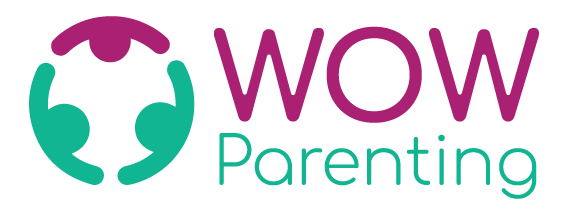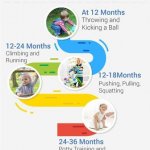What are the signs of learning disabilities in children?

Learning disabilities, or learning disorders, is a term for a wide variety of learning problems. It is not a problem concerned with intelligence or motivation. Children and adults with learning disabilities have brains that are simply wired differently. They see, hear, and understand things differently. This can lead to trouble with learning new information, skills and putting them to use. The most common type of learning disability involve problems with reading, writing, math, reasoning, listening, and speaking.
Children with learning disabilities do not have low intelligence. In fact, most are as smart as other children of their age. They just need to be taught in ways that are tailored to their unique learning styles. Read on to learn more about learning disabilities so you can help pave the way for success for your child.
Signs And Symptoms Of Learning Disabilities
It is not always easy to identify learning disabilities as they are very different from one child to another. One may struggle with reading and spelling, while someone else may struggle with arithmetic. The problems are very different, but they are all learning disorders.
Because of the wide variations, there is no single symptom that you can look for as a problem. However, some warning signs are more common than others at different stages. If you’re aware of what they are, you’ll be able to catch a learning disorder early and quickly.
Signs and symptoms of learning disabilities: Ages 5-9
- Gets confused with basic words when reading
- Slow to learn new skills
- Has trouble learning the connection between letters and sounds
- Unable to blend sounds to make words
- Consistently misspells words and makes frequent errors
- Has trouble learning basic math concepts
- Difficulty in telling time and remembering sequences
Signs and symptoms of learning disabilities: Ages 10-13
- Dislikes reading and writing; avoids reading aloud
- Faces difficulty with reading comprehensions or mathematics
- Spells the same word differently in a single document
- Has trouble with open-ended test questions and word problems
- Poor handwriting
- Poor organizational skills (bedroom, homework, desk is messy and disorganized)
- Has trouble following class discussion or instructions, and expressing thoughts aloud.
Paying attention to normal developmental milestones for toddlers and preschoolers is very important. Early detection of developmental differences may be an early signal of a learning disability and problems that are spotted early can be easier to correct. A developmental lag might not be considered a symptom of a learning disability until your child is older, but if you recognize it when your child is young, you can intervene early. If you suspect that your child’s learning difficulties may require special assistance, please do not delay in finding support. The sooner you move forward, the better your child’s chances for reaching their full potential.
What are the types of learning disabilities in children?
Learning disabilities are often grouped by school-area skill set. If your child is in school, the types of learning disorders that are most visible are reading, writing, or calculating.

1. Learning disabilities in reading (dyslexia):
There are two types of learning disabilities in reading. Basic reading problems occur when there is a difficulty in understanding the relation between sounds, letters, and words. Reading comprehension problems occur when there is an inability to grasp the meaning of words, phrases, and paragraphs.
Children with dyslexia often show the following signs of the condition. These may include:
- Having a hard time understanding what others are saying
- Delay in being able to speak
- Difficulty in expressing thoughts or feelings
- Difficulty in learning new words (vocabulary)
- Trouble in learning foreign languages
- Giving up on longer reading tasks
- Difficulty understanding questions and following directions
- Problems remembering numbers in sequence (for example, telephone numbers and addresses)

2. Learning disabilities in writing (dysgraphia):
Learning disabilities in writing can involve the physical act of writing or the mental activity of comprehending information. Basic writing disorder refers to difficulty in forming words and letters. Expressive writing disability indicates a struggle to organize thoughts on paper.
Symptoms of a written language learning disability include:
- A strong dislike for writing and/or drawing
- Very poor handwriting
- Problems with grammar
- Losing energy or interest as soon as they start writing
- Trouble writing down thoughts in a logical sequence
- Saying words out loud while writing
- Leaving words unfinished or omitting them when writing sentences
3. Learning disabilities in math (dyscalculia):
Learning disabilities in math vary greatly depending on the child’s other strengths and weaknesses. A child’s ability to do math will be affected differently by a language learning disability, or a visual disorder or a difficulty with sequencing, memory or organization.
- Difficulty with math-related word problems
- Trouble making change in cash transactions
- Faces difficulty with logical sequences (for example, steps in math problems)
- Has trouble in understanding the time sequence of events
- Trouble in describing math processes

4. Learning disabilities in motor skills (dyspraxia)
Motor difficulty refers to problems with movement and coordination whether it is with fine motor skills (cutting, writing) or gross motor skills (running, jumping). A motor disability is sometimes referred to as an “output” activity meaning that it relates to the output of information from the brain.
Signs that your child might have a motor coordination disability include problems with physical abilities that require hand-eye coordination, like holding a pencil or buttoning a shirt.
5. Difficulties in audio and visual processing:
The eyes and the ears are the primary means of delivering information to the brain, also known as ‘input.’ If either the eyes or the ears are not working properly, learning can suffer.
a. Auditory processing disorder:
Professionals may refer to the ability to hear well as “auditory processing skills” or “receptive language.” The ability to hear things greatly impacts the ability to read, write and spell. An inability to distinguish subtle differences in sound, or hearing sounds at the wrong speed makes it difficult to understand the basic concepts of reading and writing.
b. Visual processing disorder:
Problems in visual perception include missing subtle differences in shapes, reversing letters or numbers, skipping words, skipping lines, misperceiving depth or distance, or having problems with eye-hand coordination. Professionals may refer to the work of the eyes as “visual processing.” Visual perception can affect gross and fine motor skills, reading comprehension, and math.
Other symptoms of learning disabilities:
- Responds inappropriately at many instances
- Aggressive and impulsive in nature
- Difficult to discipline
- Has a problem in adapting things
- Difficulty in listening and remembering
- Places letters in incorrect sequence
- Faces difficulty in understanding words or concepts
- Delayed speech development – immature speech
Children can be both exhilarating and exhausting, but it may seem that your child is especially so. You may experience some frustration trying to work with your child, and it can seem like an uphill battle when you don’t have the information you need. After you learn what their specific learning disability is and how it is affecting their behavior, you will be able to start addressing the challenges in school and at home. If you can, be sure to reach out to other parents who are facing similar challenges then they can be great sources of knowledge and emotional support.




